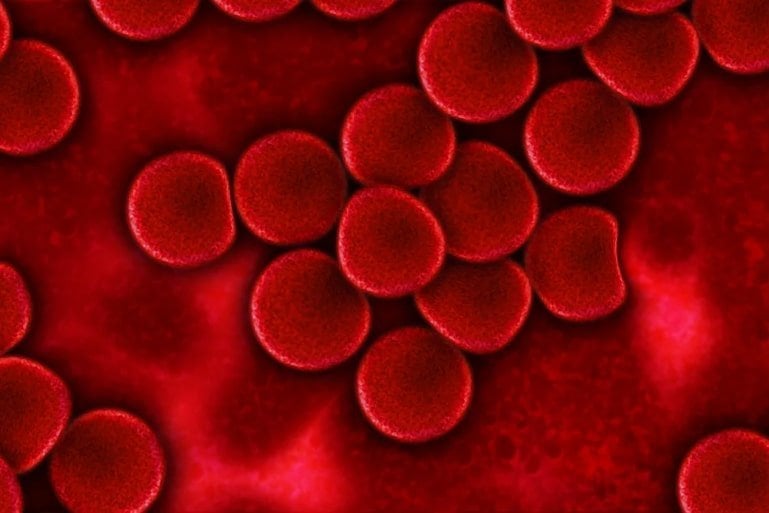Summary: Researchers have recognized a molecule in the blood that is developed for the duration of training. The molecule, Lac-Phe, can proficiently minimize food stuff consumption and being overweight in mouse products.
Source: Baylor Faculty of Medicine
Researchers at Baylor Faculty of Medication, Stanford Faculty of Medication and collaborating institutions report right now in the journal Mother nature that they have discovered a molecule in the blood that is developed during work out and can correctly reduce food items ingestion and being overweight in mice.
The findings strengthen our knowing of the physiological processes that underlie the interplay among exercise and hunger.
“Regular training has been confirmed to help weight reduction, control appetite and boost the metabolic profile, in particular for persons who are chubby and overweight,” explained co-corresponding author Dr. Yong Xu, professor of pediatrics—nutrition and molecular and cellular biology at Baylor.
“If we can recognize the mechanism by which work out triggers these benefits, then we are closer to aiding a lot of individuals enhance their overall health.”
“We wished to fully grasp how work out operates at the molecular level to be equipped to capture some of its benefits,” mentioned co-corresponding creator Jonathan Very long, MD, assistant professor of pathology at Stanford Drugs and an Institute Scholar of Stanford ChEM-H (Chemistry, Engineering & Medicine for Human Wellbeing).
“For instance, more mature or frail people today who can’t training enough, could a person day profit from getting a treatment that can assistance gradual down osteoporosis, coronary heart illness or other circumstances.”
Xu, Extended and their colleagues executed extensive analyses of blood plasma compounds from mice following intense treadmill running. The most substantially induced molecule was a modified amino acid named Lac-Phe. It is synthesized from lactate (a byproduct of demanding work out that is responsible for the burning sensation in muscle tissues) and phenylalanine (an amino acid that is just one of the constructing blocks of proteins).
In mice with food plan-induced weight problems (fed a high-unwanted fat eating plan), a superior dose of Lac-Phe suppressed food consumption by about 50% when compared to regulate mice more than a period of time of 12 hrs with out influencing their motion or electricity expenditure. When administered to the mice for 10 days, Lac-Phe lowered cumulative food intake and body weight (owing to reduction of entire body excess fat) and improved glucose tolerance.

The researchers also recognized an enzyme referred to as CNDP2 that is concerned in the creation of Lac-Phe and showed that mice lacking this enzyme did not shed as significantly weight on an work out regime as a management group on the exact same exercising strategy.
Curiously, the crew also identified robust elevations in plasma Lac-Phe concentrations adhering to actual physical action in racehorses and individuals. Data from a human training cohort confirmed that sprint physical exercise induced the most dramatic boost in plasma Lac-Phe, adopted by resistance training and then endurance education.
“This indicates that Lac-Phe is an historical and conserved method that regulates feeding and is connected with physical activity in a lot of animal species,” Extensive reported.
“Our up coming measures involve obtaining extra aspects about how Lac-Phe mediates its results in the human body, which includes the brain,” Xu mentioned. “Our intention is to discover to modulate this workout pathway for therapeutic interventions.”
About this exercising and neuroscience analysis news
Creator: Press Place of work
Resource: Baylor School of Medication
Get in touch with: Push Workplace – Baylor College or university of Medicine
Image: The picture is in the community domain
Unique Investigation: Closed obtain.
“An exercising-inducible metabolite that suppresses feeding and being overweight” by Jonathan Extensive et al. Character
See also

Abstract
An work out-inducible metabolite that suppresses feeding and being overweight
Training confers security against weight problems, type 2 diabetes and other cardiometabolic diseases. Nevertheless, the molecular and mobile mechanisms that mediate the metabolic advantages of bodily activity remain unclear.
Listed here we clearly show that exercise stimulates the creation of N-lactoyl-phenylalanine (Lac-Phe), a blood-borne signalling metabolite that suppresses feeding and weight problems.
The biosynthesis of Lac-Phe from lactate and phenylalanine occurs in CNDP2+ cells, which includes macrophages, monocytes and other immune and epithelial cells localized to varied organs. In food plan-induced overweight mice, pharmacological-mediated increases in Lac-Phe decreases food stuff consumption without having impacting motion or electricity expenditure.
Chronic administration of Lac-Phe decreases adiposity and physique excess weight and enhances glucose homeostasis. Conversely, genetic ablation of Lac-Phe biosynthesis in mice raises meals intake and weight problems adhering to exercising education.
Very last, big activity-inducible will increase in circulating Lac-Phe are also observed in human beings and racehorses, establishing this metabolite as a molecular effector affiliated with physical exercise throughout many action modalities and mammalian species.
These facts define a conserved exercising-inducible metabolite that controls meals intake and influences systemic vitality harmony.





More Stories
Getting the Stability between Food stuff-Science Gains and the Enchantment of Normal
Tai Chi Can Lower Severity of Parkinson’s, Scientists Discover : ScienceAlert
Science Launching to the ISS Benefits Well being on Earth